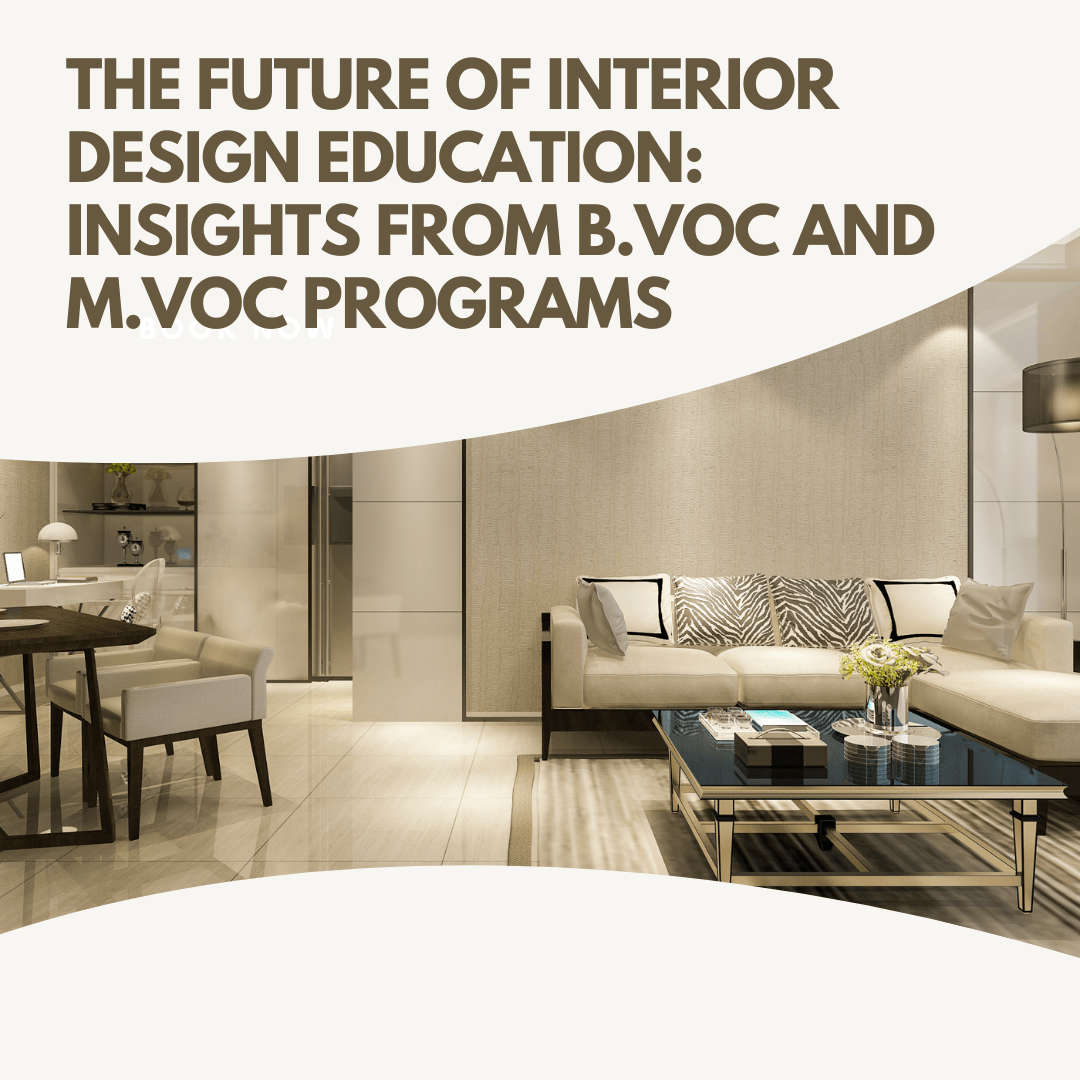As the landscape of interior design evolves, so do the educational avenues that shape aspiring designers. In this exploration, we’ll delve into how Bachelor of Vocation (B.Voc) and Master of Vocation (M.Voc) programs are adapting to the dynamic demands of the industry and what the future may hold.
Adaptability in B.Voc Programs
Integration of Technology:
B.Voc programs are incorporating the latest design technologies, ensuring students are well-versed in tools shaping the industry. From virtual reality design simulations to advanced software applications, technology integration is becoming a cornerstone.
Industry Collaborations:
To bridge the gap between academia and industry, B.Voc programs are fostering collaborations with design firms, providing students with real-world projects and exposure. This approach ensures graduates are industry-ready and understand contemporary design challenges.
Sustainability Emphasis:
With sustainability at the forefront of design concerns, B.Voc programs are placing a heightened emphasis on eco-friendly practices. Integrating sustainable design principles into the curriculum prepares students to address environmental considerations in their future projects.
Advancements in M.Voc Programs
Specialized Tracks:
M.Voc programs are offering specialized tracks to cater to diverse career paths within interior design. Whether it’s healthcare design, sustainable architecture, or digital interiors, students can tailor their education to align with their specific interests.
Global Perspectives:
Recognizing the increasingly global nature of design projects, M.Voc programs are incorporating international perspectives. Students may have opportunities for global collaborations, study abroad programs, or exposure to design trends from various cultural contexts.
Research and Innovation:
M.Voc programs are placing a strong emphasis on research and innovation. This involves not only staying updated on the latest design trends but also contributing to the field through original research projects. This focus on innovation ensures graduates are at the forefront of design thinking.
The Future Outlook: Challenges and Opportunities
Challenges:
- Rapid Technological Changes: Keeping pace with ever-evolving design technologies poses a challenge for educators.
- Global Competition: As design becomes increasingly globalized, programs need to prepare students for international competition and collaboration.
Opportunities:
- Virtual Learning: The rise of virtual learning platforms creates opportunities for remote collaboration and global networking.
- Interdisciplinary Collaboration: Encouraging collaboration with other disciplines, such as architecture or environmental science, opens new avenues for holistic design education.
Conclusion: Designing Tomorrow’s Designers
In navigating the future of interior design education, B.Voc and M.Voc programs are at the forefront of innovation. By embracing technology, fostering industry connections, and adapting to global shifts, these programs are shaping designers who will not only meet but also drive the future demands of the interior design industry. As we look ahead, the synergy of education, technology, and creativity promises an exciting evolution in the realm of interior design.




